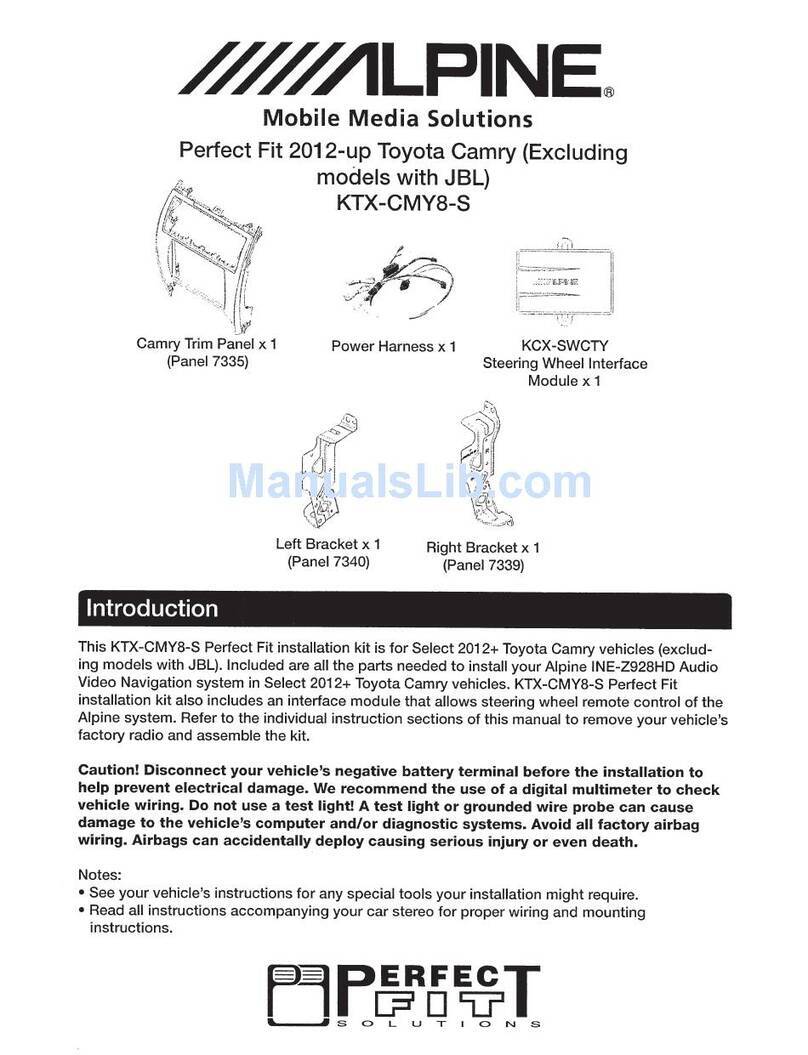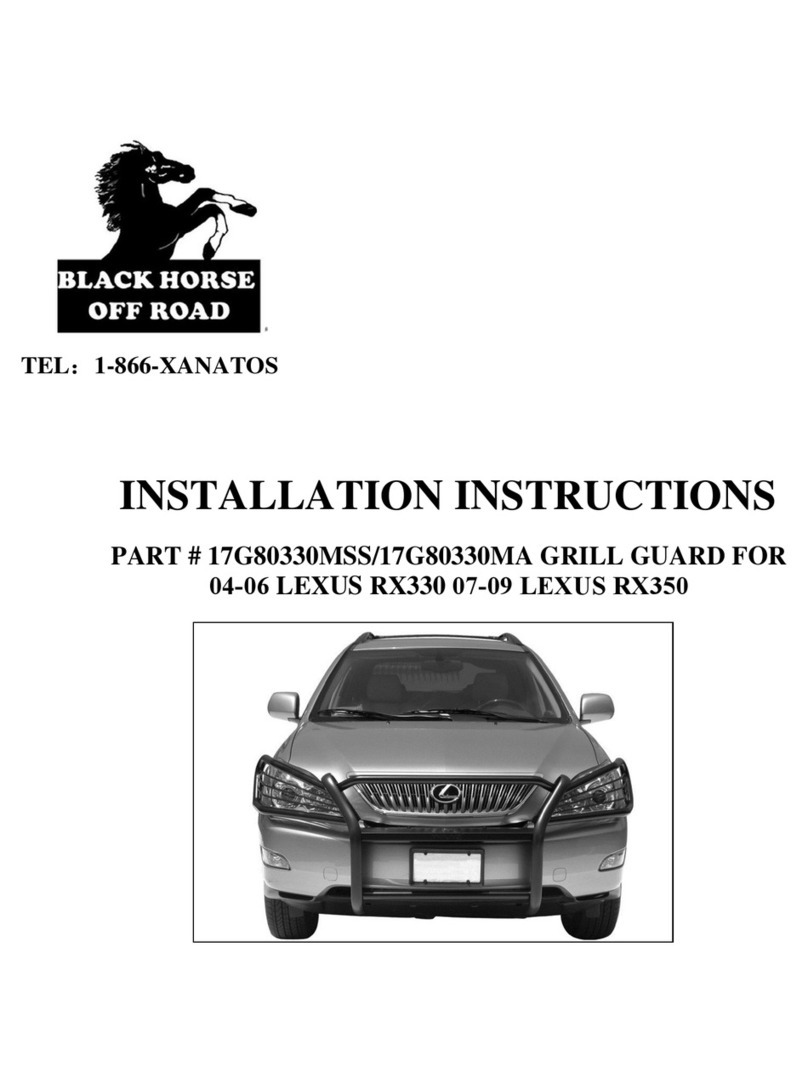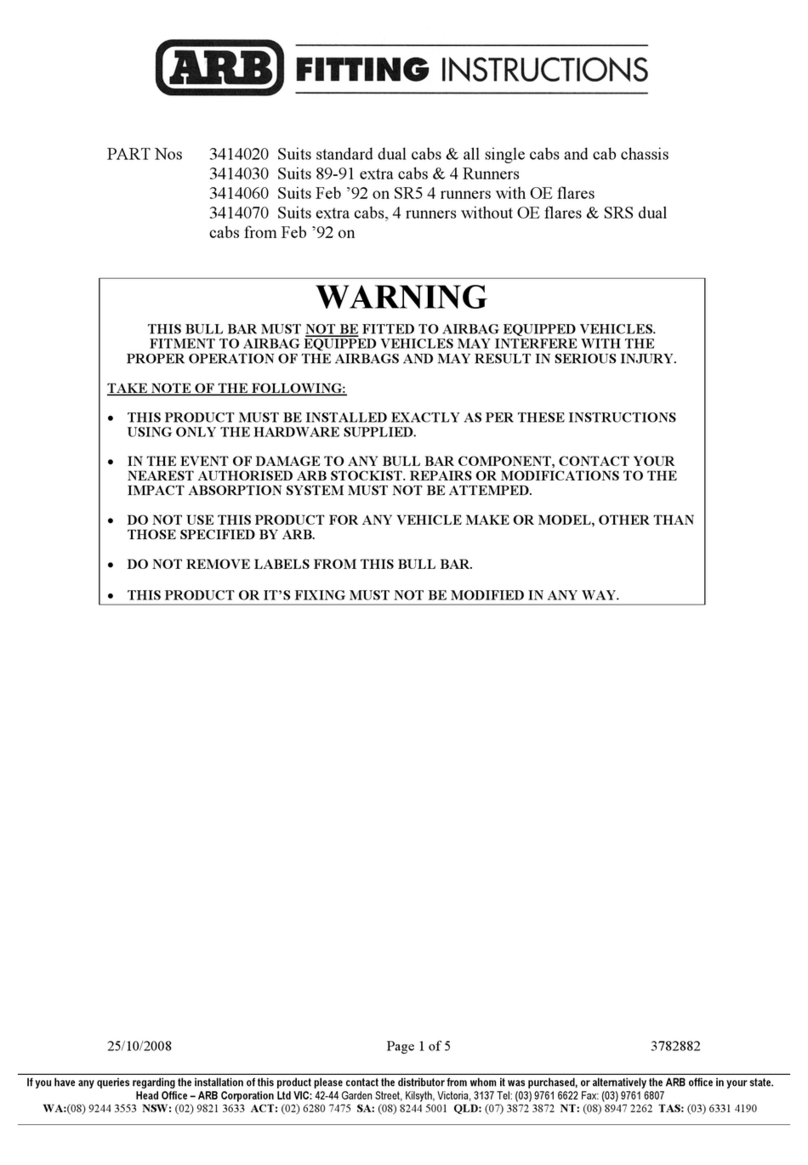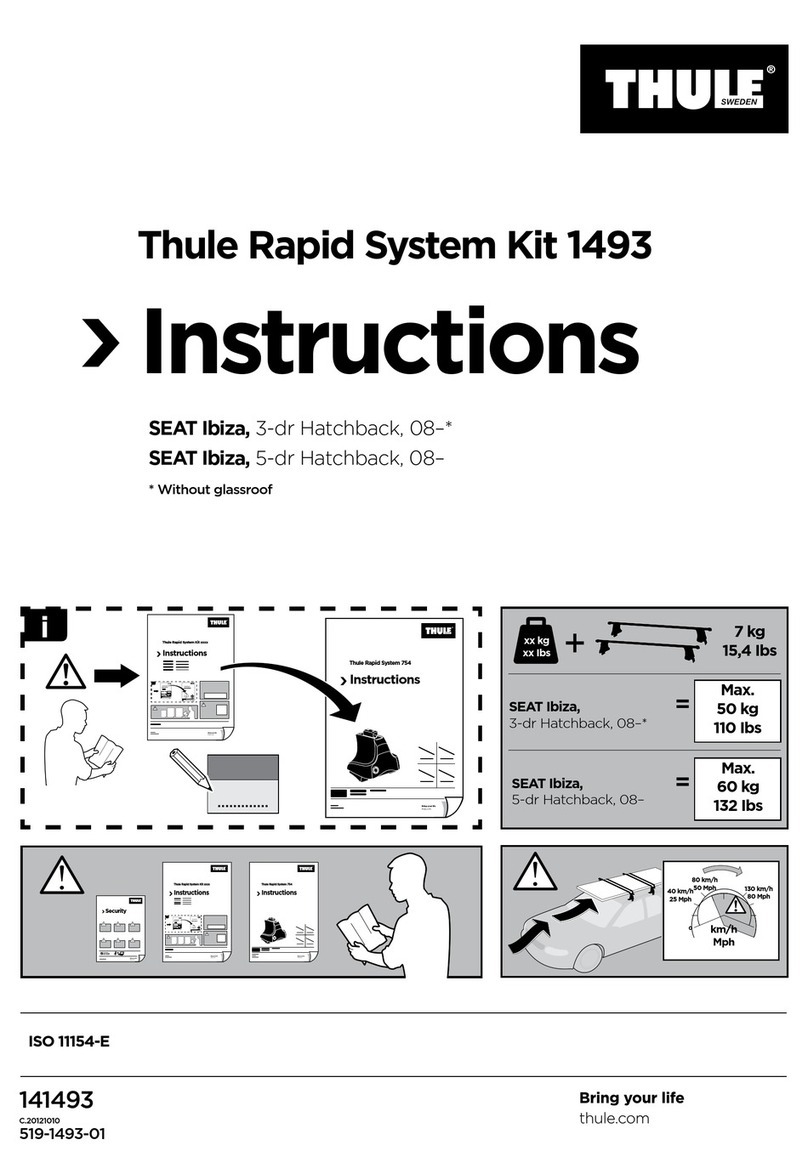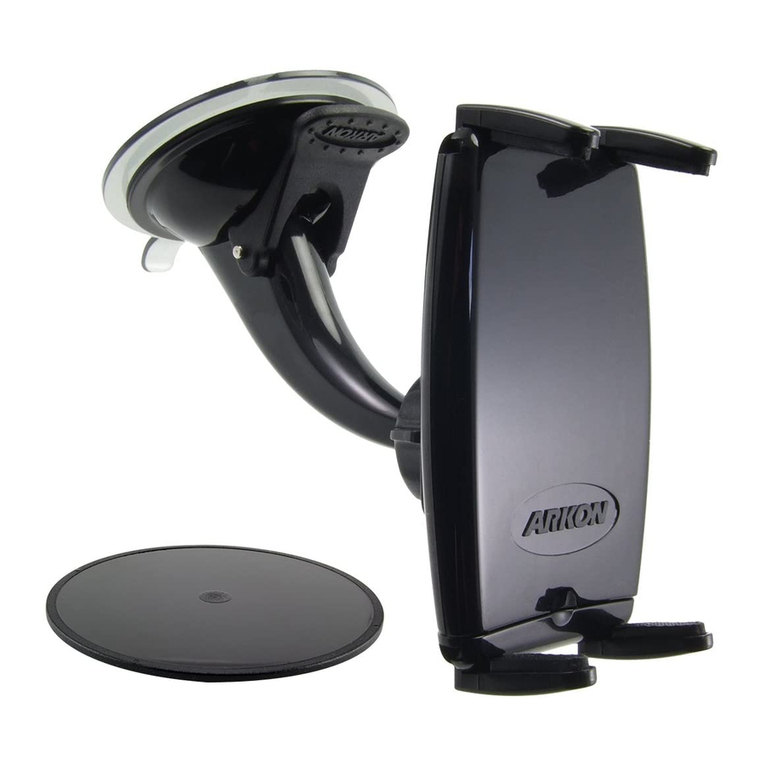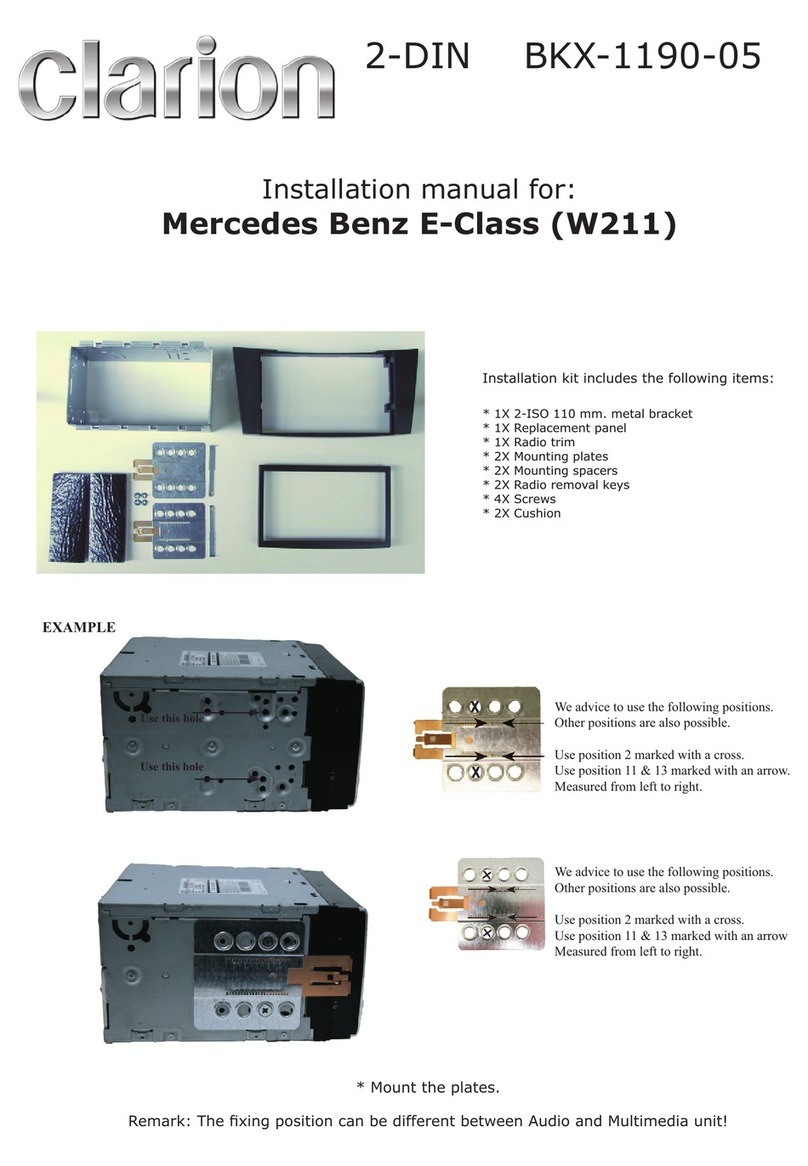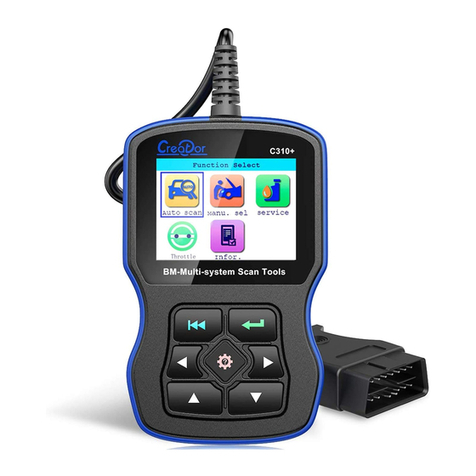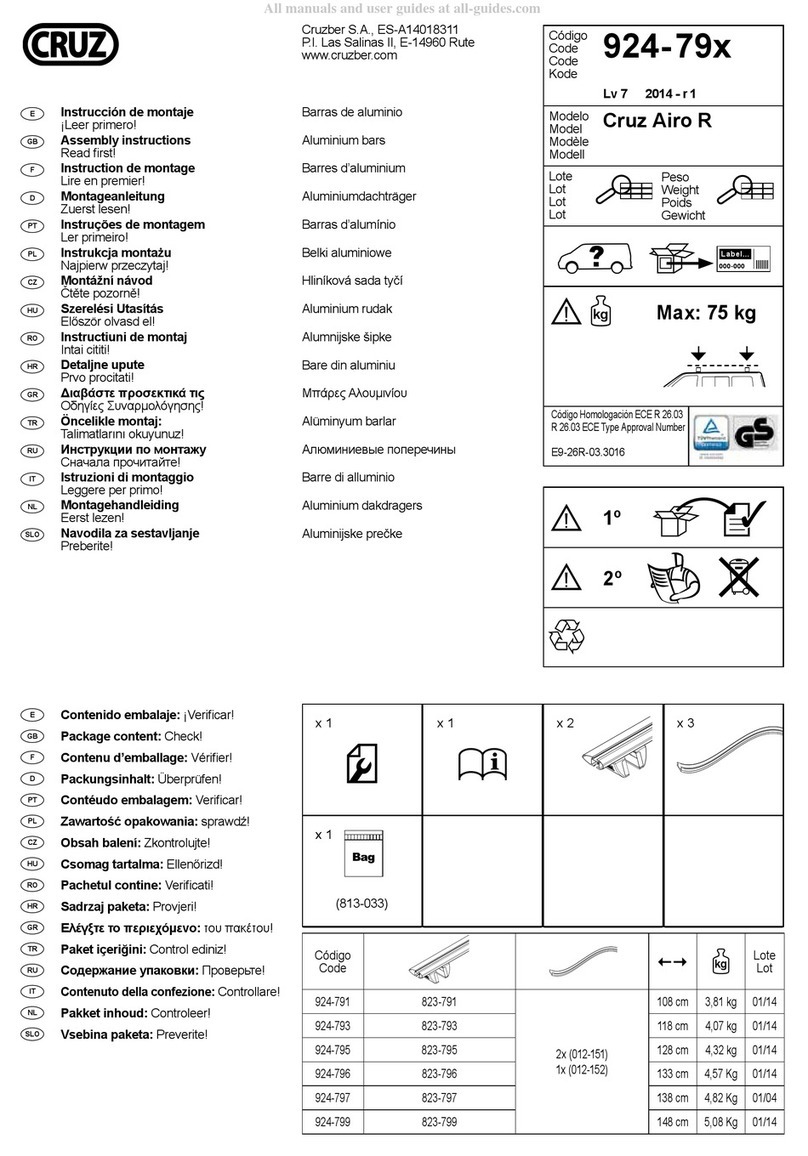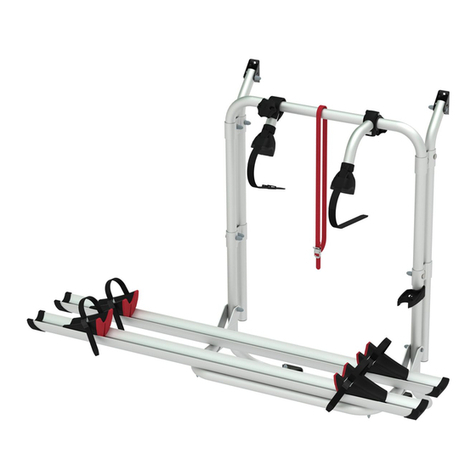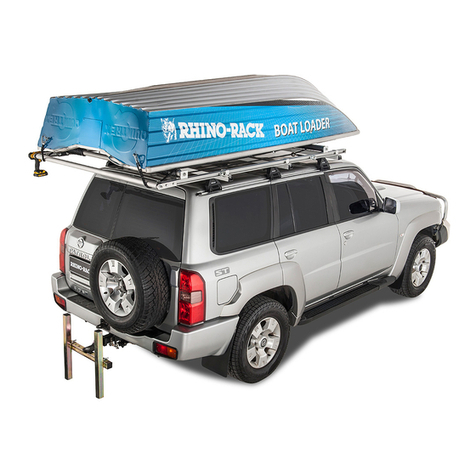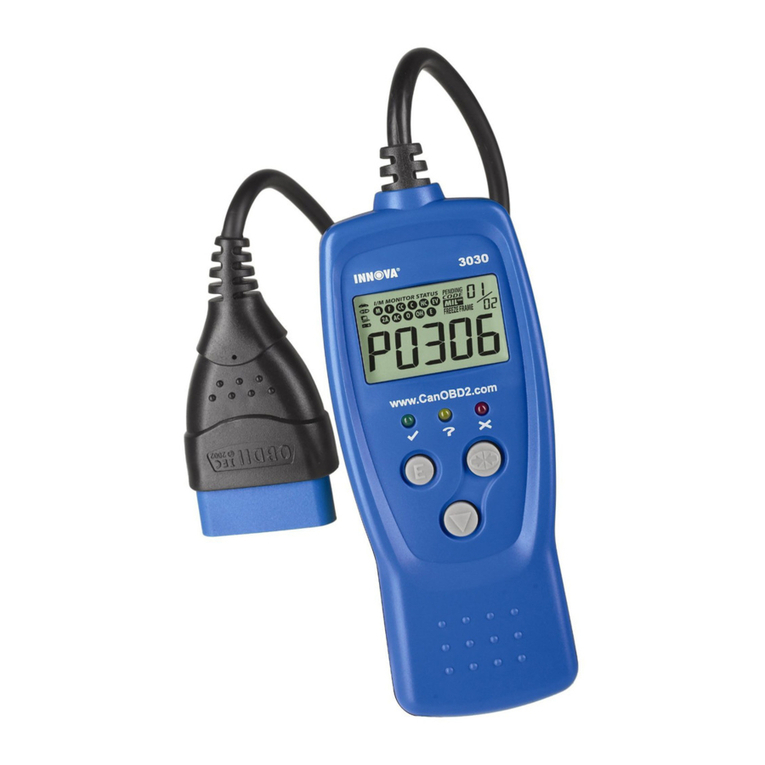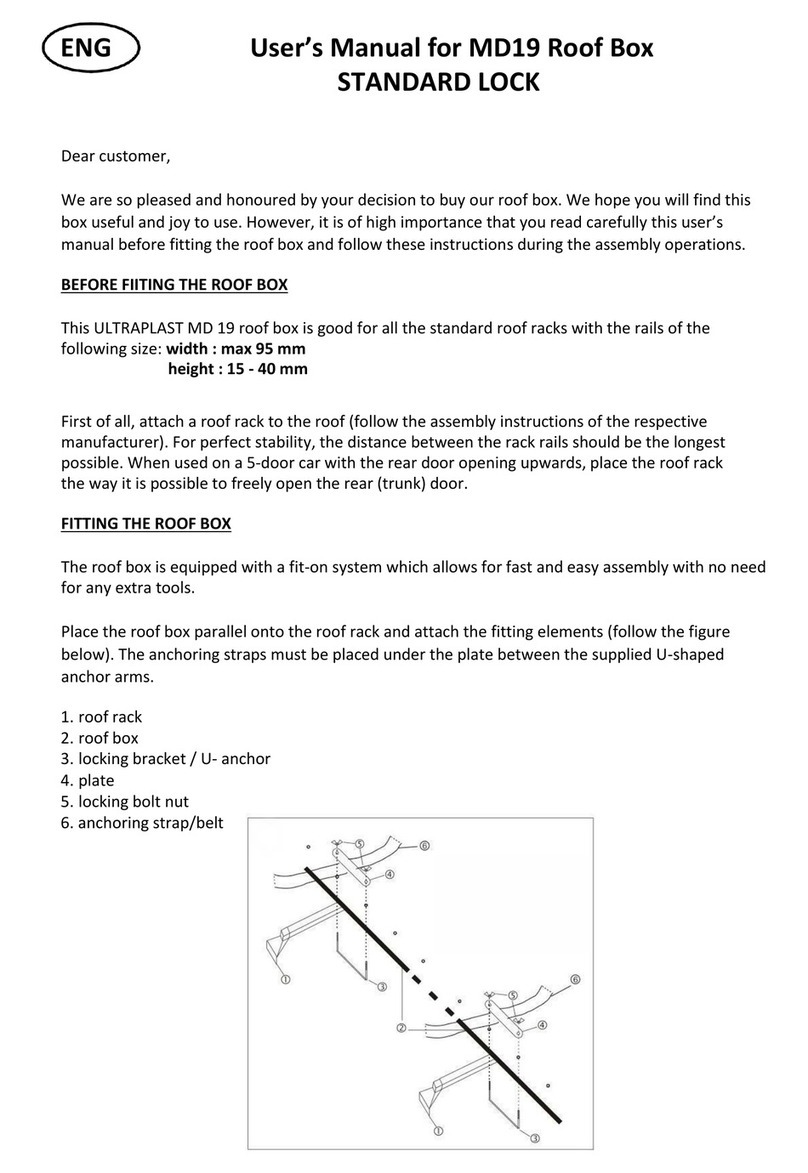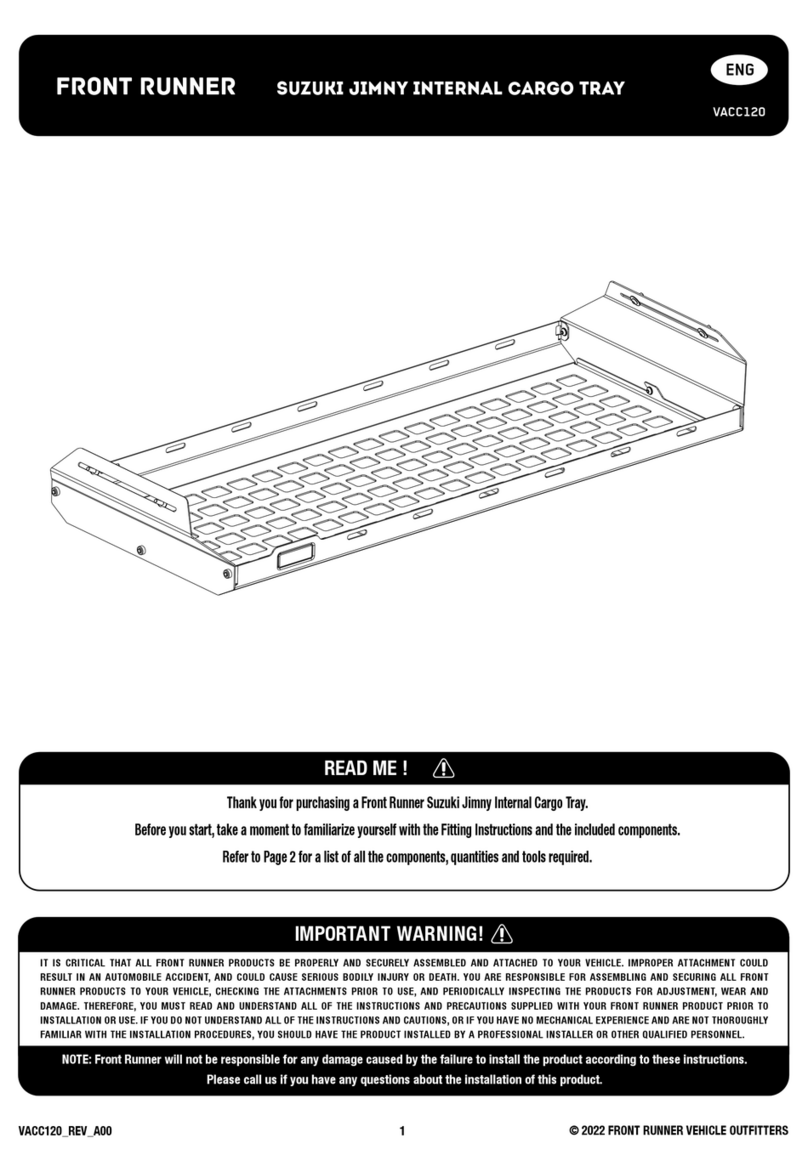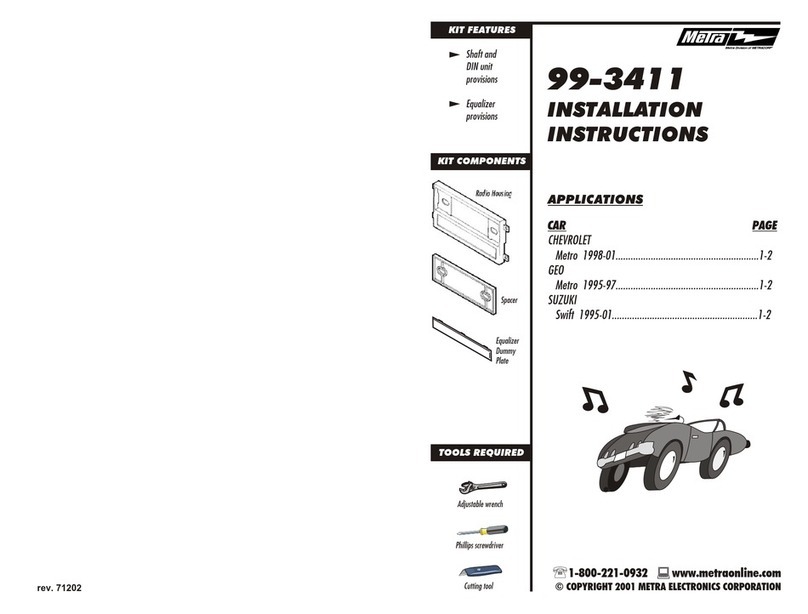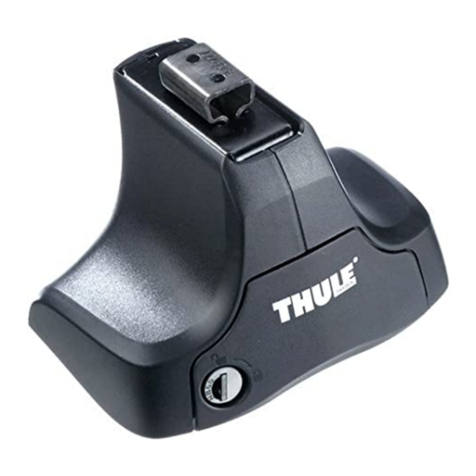Equipter STOW-A-BRAKE User manual

STOW-A-BRAKE
OPERATORS MANUAL
855.378.4783
www.equipter.com
49 Eagle Drive, Leola, PA 17540

i
All rights reserved. No part of this publication may be reproduced, stored in a retrieval system, or
transmitted in any form or by any means, electronic, mechanical, photocopying, recording, or otherwise,
without prior written permission of New Heights, LLC.
Additional manuals can be ordered for a fee from New Heights, LLC. 717.768.0070
The information in this manual is provided to promote the safe use of, and assist the operator in achieving
the best performance from Equipter products described herein, for their intended applications.
DISCLAIMER
Copyright 2019 by New Heights, LLC
Covered by Patent Number 6817677

INTRODUCTION ................................................................................................................................................................................................1
REPORTING SAFETY DEFECTS..................................................................................................................................................................1
WARRANTY..........................................................................................................................................................................................................2
GENERAL INFORMATION..............................................................................................................................................................................4
SAFETY PRECAUTION DEFINITIONS.......................................................................................................................................................4
PRECAUTIONS...................................................................................................................................................................................................4
Safety Requirements................................................................................................................................................................................5
Before You Start ........................................................................................................................................................................................6
Operating Precautions.............................................................................................................................................................................6
Load Handling Precautions ...................................................................................................................................................................6
Transport Precautions...............................................................................................................................................................................7
Maintainance Precautions.......................................................................................................................................................................7
OVERVIEW ...........................................................................................................................................................................................................8
TRANSPORTING................................................................................................................................................................................................8
Steps for Determining Correct Load Limit ......................................................................................................................................8
Tow Vehicle ..................................................................................................................................................................................................8
Trailer Connection.....................................................................................................................................................................................9
Disconnecting the Trailer .................................................................................................................................................................... 10
OPERATION...................................................................................................................................................................................................... 11
Maintenance............................................................................................................................................................................................. 11
Lubricate the Axle Engagement System ....................................................................................................................................... 13
Engine Operation ................................................................................................................................................................................... 14
DRIVING THE EQUIPTER ........................................................................................................................................................................... 15
Outrigger Operation .............................................................................................................................................................................. 15
DUMP BOX ........................................................................................................................................................................................................17
Emptying the Dump Box.......................................................................................................................................................................17
TIRE SAFETY INFORMATION.................................................................................................................................................................... 18
Steps for Determining Correct Load Limit – Trailer................................................................................................................. 19
Steps For Determining Correct Load Limit – Tow Vehicle..................................................................................................... 20
Glossary of Tire Terminology ............................................................................................................................................................. 21
Tire Safety - Everything Rides On It............................................................................................................................................... 24
Tire Safety Tips ....................................................................................................................................................................................... 30
NOTES ................................................................................................................................................................................................................ 31
SPECIFICATIONS........................................................................................................................................................................................... 32
OPERATIONS CHECKLIST......................................................................................................................................................................... 33
TABLE OF CONTENTS
ii iii
Figure 1. Operating and Maintenance Positions ............................................................................................................................2
Figure 2. Decals ..........................................................................................................................................................................................3
Figure 3. Danger Decal, Electrocution Hazard ................................................................................................................................5
Figure 4. Equipter Positioned Under Roof........................................................................................................................................8
Figure 5. Equipter dumping into truck. ..............................................................................................................................................8
Figure 6. VIN Label, Tire and Loading Information Placard........................................................................................................9
Figure 7. Connection to Tow Vehicle................................................................................................................................................. 10
Figure 8. Wheel Lift Lever.................................................................................................................................................................... 10
Figure 9. Chains, Latch, Break-Away Cable. .................................................................................................................................. 11
Figure 10. Platform Latch and Wheel Lift Safety Lock............................................................................................................. 11
Figure 11. Parking Brake Lever.......................................................................................................................................................... 12
Figure 12. Fluid Levels. ......................................................................................................................................................................... 13
Figure 13. Grease Fittings Locations............................................................................................................................................... 13
Figure 14. Ignition Switch, Choke, Fuel Shutoff and Pull Start. ............................................................................................ 15
Figure 15. Throttle at Operator Station........................................................................................................................................... 15
Figure 16. Forward/Reverse and Steering Levers. .................................................................................................................... 16
Figure 18. Outrigger Levers. ............................................................................................................................................................... 16
Figure 17. Bubble Level Indicator.......................................................................................................................................................17
Figure 19. Decal-Raise or Lower Steering Wheels. ....................................................................................................................17
Figure 20. Front Outriggers with blocking......................................................................................................................................17
Figure 21. Rear Outriggers with blocking.......................................................................................................................................17
Figure 22. Decal-Operator Contact Possible................................................................................................................................ 18
Figure 23. Flaps Open Under Roof................................................................................................................................................... 18
Figure 24. Roll Back, Lift, Dump and Tailgate Levers. .............................................................................................................. 19
Figure 25. Dumping debris from Dump Box.................................................................................................................................. 19
Figure 28. Rear Extension Rails Stored.......................................................................................................................................... 20
Figure 29. Rear Extension Rails Installed. ..................................................................................................................................... 20
Figure 26. Preparing to Store the Mats. ......................................................................................................................................... 21
Figure 27. Mat Storage. ......................................................................................................................................................................... 21
Figure 30. Chutes in Use...................................................................................................................................................................... 21
Figure 31. Chute and Spouting Guard Storage. .......................................................................................................................... 22
Figure 32. VIN Label, Tire and Loading Information Placard.................................................................................................. 25
ILLUSTRATIONS

iv 1
This manual is furnished to you, the owner/operator, as a guide to get the greatest benefit from your
Equipter Stow-A-Brake brake handling system. Equipter wants you to be able to get the most use out of
your equipment through safe and efficient operation.
Before attempting to install and operate this equipment, carefully read all sections of this manual. Be sure
that you thoroughly understand all of the safety information and operating procedures.
Pay special attention to the Safety Precautions and Requirements, particularly all DANGER, WARNING, and
CAUTION notices included in this manual. These items combined, form the guidelines for promoting a safe
and efficient operating environment, along with continuous, reliable service and minimum down time.
INTRODUCTION
NOTE: Some equipment depicted in illustrations may not reflect exact production model
configurations.
NOTE: All safety, operating, and servicing information reflects current production models at
the time of publication of this manual.
NOTE: Equipter reserves the right to discontinue models at any time, change specifications,
and improve design without notice and without incurring obligation on goods previously
purchased and to discontinue supplying any part listed, when the demand does not warrant
production.
If you believe that your vehicle has a defect which could cause a crash or could cause injury or death,
you should immediately inform the National Highway Traffic Safety Administration (NHTSA) in addition to
notifying New Heights, LLC.
If NHTSA receives similar complaints, it may open an investigation, and if it finds that a safety defect
exists in a group of vehicles, it may order a recall and remedy campaign. However, NHTSA cannot become
involved in individual problems between you, your dealer, or New Heights, LLC.
To contact NHTSA, you may either call the Vehicle Safety Hotline toll-free at 1-888-327-4236
(TTY: 1-800-424-9153), go to http://www.safecar.gov or write to:
Administrator
NHTSA
1200 New Jersey Avenue S.E.
Washington, DC 20590
You can also obtain other information about motor vehicle safety from http://www.safecar.gov.
REPORTING SAFETY DEFECTS
This Equipter Stow-A-Brake handling system is designed and manufactured to high quality standards.
Equipter, therefore, guarantees this equipment to be free from defects in workmanship and materials for
one year from purchase date. Warranty provides for replacement parts but does not include the labor to
replace defective parts.
Mounting of the Stow-a-Brake is the complete responsibility of the owner/installer. Equipter Stow-a-Brake
is not responsible for determining suitability of the vehicle or the security of attachment to the vehicle. No
warranty is expressed or implied to the vehicle.
This warranty does not cover normal wear of components or fit of the brake to the device. Attachment of
the brake to the device is the responsibility of the owner/installer.
Misuse, abuse, misapplication, and unauthorized alterations will void this warranty.
WARRANTY
The purpose of this manual is to provide safe operating and maintenance procedures for the intended use
of this equipment. Read and understand this manual before installing or operating the Equipter Stow-A-
Brake.
Since the manufacturer has no direct control over Equipment application and operation, it is the
responsibility of the operator to conform to good safety practices in the implementation of this equipment.
This section is composed of various warnings and safety tips which must be followed.
GENERAL INFORMATION
Dangers, Warnings, Cautions, and Notes are strategically placed throughout this manual to further
emphasize the importance of personal safety, qualifications of operating personnel, and proper use of this
equipment in its intended application.
The level of risk is indicated by the following signal words:
SAFETY PRECAUTION DEFINITIONS
Notes are also found in this manual.
NOTE: Provides information which may be of special interest.
Indicates a potentially hazardous situation or
practice which, if not avoided, could result in
death or serious injury.
Indicates an imminently hazardous situation
which, if not avoided, will result in death or
serious injury.
Indicates potentially hazardous situation or
practice which, if not avoided, will result in
damage to equipment and/or minor injury.

2 3
Always use safety lanyard when in transport mode.
The primary responsibility for safety with the equipment falls to the operator. It is the skill, care, common
sense, and good judgment of the operator that determines how efficiently and safely the job is performed.
Know the equipment before you start. Know the capabilities, dimensions, and how to operate. Visually
inspect the equipment before starting and never operate equipment that is not in proper working order
with all safety devices in place and operating.
The Equipter Stow-a-Brake brake handling system was developed from the need to be more efficient.
The reduced time to load and unload the brake from a ladder rack will allow the initial cost to quickly be
returned. Several additional benefits will quickly be realized:
• Reduced physical effort.
• Correct working height.
• Ready access where ever the work truck is parked.
• Easy access to tools and other storage in the work truck.
The Equipter Stow-a-Brake works with most common brakes used in the roofing and siding installation
industries. Following is a list of common brakes which have been used with the Stow-a-Brake. If you have
questions concerning use of a particular brake with Stow-a-Brake, contact Equipter at info@equipter.com.
PRECAUTIONS
MOUNTING
OVERVIEW
Modification of the equipment, including
removal or modification of safety and
identification decals, without the written
consent of the manufacturer is a safety
violation and is strictly prohibited.
Prevent injury and/or equipment damage.
Stow-A-Brake must be placed in transport
position before moving vehicle.
Safety Requirments
Always use caution and safe operating practices when operating this equipment.
Always securely latch Stow-a-Brake in transport position before transporting.
Always latch Stow-a-Brake in work position before operating the brake
Keep people clear of Stow-a-Brake before releasing transport latch to lower into the work position.
Before You Start
Know your equipment. Make sure all safety devices are in place.
Inspect the equipment. Check for loose bolts and nuts. Be sure all operational decals are in place and
legible. Never use damaged or unsafe equipment.
Maintenance Precautions
Use only manufacturer recommended replacement parts. Other parts may be substandard in fit and quality.
Tapco Models
Pro 19 Brake Size: 12’6”, 10’6” and 8’6”
Pro 14 Brake Size: 12’6”, 10’6” and 8’6”
Figure 3. Danger Decal, Electrocution Hazard
MAX-I-MUM XL
Size: 12' 6'', 10' 6''
and 8' 6'' (2 persons
required)
VanMark Models
Mark II Trimmaster
Contractor
Size: 12' 6'', 10' 6''
and 8' 6''
Mark II Trimmaster
Commercial
Size: 12' 6'', 10' 6''
and 8' 6''
Mark I Series Size: 12' 6'', 10' 6''
and 8' 6''
Industrial Trimmaster
Size: 12' 6'', 10' 6''
and 8' 6'' (2 persons
required)
Pro-Trim Alum-A-Brake
Basic plus Size: 10' 6''
Ultima Size: 10' 6''
NOTE: The accessory Alum-A-Brake table that is
available does not fit on the Stow-A-Brake unless
modified

4 5
Stow-a-Brake brake handling system attaches to a ladder rack or truck cap. Observe the following
guidelines when determining ability of vehicle to support the Stow-a-Brake.
• Attach Stow-a-Brake mounting arms to a ladder rack or truck cap with sufficient strength to support
the Stow-A-Brake system and the brake during travel and operation. Aluminum and fiberglass caps
are not sufficient to support Stow-a-Brake components.
• Ladder rack or truck cap must be securely attached to vehicle body.
• Maximum distance between the two mounting arms is 8 ft. Distances greater than 8 ft. may allow
too much flex within the brake frame for accurate bends.
NOTE: Brakes equipped with a center support may use a longer distance.
• Mount Stow-a-Brake mounting arms at a height that allows the brake to be positioned at correct
working height. Arms must be mounted high enough to allow side access doors to open when in
transport position.
• Two mounting arms must be plumb and square to each other or binding may occur when raising or
lowering the brake.
Additional brackets may be required to safely mount the Stow-a-Brake. Follow instructions below as a
guideline. Depending upon the ladder rack or truck cap the Stow-a-Brake is being attached to, some
variation may be required.
NOTE: If unsure of the mounting situation or capability of the device being attached to, contact
Equipter at 717-768-0070.
Guidelines
Installation On Vehicle
1. Remove latch bolts and install safety cable
bracket (A) to back of Stow-A-Brake (B).
Reinstall and tighten bolts.
2. Repeat for other Stow-A-Brake.
Prepare Stow-A-Brake
Figure 3. Danger Decal, Electrocution Hazard
Figure 3. Danger Decal, Electrocution Hazard
Figure 3. Danger Decal, Electrocution Hazard
1. Park vehicle on a level surface.
2. Determine work height of brake. A typical
work table height is 34 in. To achieve this
work height, mount bottom edge of Stow-
a-Brake at a height of 60 in. If side doors
must be accessed, determine width of brake
from the “hanging point” to the bottom edge.
Subtract this measurement from 34. Add this
value to 60 to determine location of bottom
of Stow-a-Brake.
3. Unfold Stow-a-Brake mounting arms and
lock in open position with pins (A).
NOTE: It may be necessary to fabricate
backing plates or other mounting plates
for inside of ladder rack or truck cap.
4. Use a level or string bob to verify
mounting frame is vertical. Clamp in place.
5. Mount bracket on ladder rack or truck cap
using ⅜in bolts, washers, lock washers and
nuts provided. Use at least four bolts in top
set of holes and four bolts in bottom set of
holes to attach each mounting bracket.
6. Measure from top of each frame to bottom
of other frame, as shown. The two diagonal
measurements must be the same ± ⅜in.
Clamp bottom of second frame in place.
NOTE: Failure to plumb mounting brackets
will cause Stow-a-Brake to bind when
opening and closing.
Prevent injury. Strong cylinders will cause
brackets to snap shut if not locked open.

6 7
7. The Stow-A-Brake is assembled at
the factory to be mounted on an angled
mounting surface. If mounting on a vertical
surface, arm (A) on each bracket must be
changed with arms provided.
The ideal position would be for the brake to
sit as level to the ground as possible.
Figure 3. Danger Decal, Electrocution Hazard
Figure 3. Danger Decal, Electrocution Hazard
Figure 3. Danger Decal, Electrocution Hazard
Figure 3. Danger Decal, Electrocution Hazard
Figure 3. Danger Decal, Electrocution Hazard
Figure 3. Danger Decal, Electrocution Hazard
Figure 3. Danger Decal, Electrocution Hazard
The quick-release system allows brake to be
quickly installed or removed.
Some brands of brake may require additional
attachment components. If necessary, holes can be
drilled through brake frame and L-bracket.
The outer brake mount on L-brackets can be
moved to accommodate brake being mounted.
Outer brake mount (A) illustrates the factory
position. Outer brake mount (B) illustrates the
mount rotated 180° for a larger brake. Mounting
latch clamp (C) has two mounting positions to
accommodate wide and narrow brakes.
To attach a brake to the Stow-a-Brake:
1. Remove pin (A) and open latch (B) on each
mounting arm.
2. Attach one 0.0625 in. rubber pad under
latch at location (C). If rail (E) is 1.75 in.,
attach one 0.25 in. rubber pad under latch
at location (D).If rail (E) is 2.0 in., attach one
0.0625 in. rubber pad under latch at location
(D).
3. Place brake on L-bracket so front of brake
is under latch clamp (F).
4. Close latch (B) and install pin (A) to secure
brake in position.
Brake Installation
Attach a rope (A) between factory installed release
cables (B). This rope allows latches to be released
simultaneously when lowering brake to working
position.
1. Remove lock pin (A). Repeat for other side.
2. Grasp center of brake and raise up into
transport position. Verify latches engage to
lock brake in storage position.
Install Release Rope
Move Brake to Transport Position
Angled Mount Verticle Mount
Always secure brake with latch. Failure
to secure correctly with latch may cause
the brake to fall when placing brake into
transport position or during travel.
Prevent injury and/or equipment damage.
Stow-A-Brake must be placed in transport
position before moving vehicle
The Stow-a-Brake brake attachment system stores a brake up alongside a ladder rack or above a truck
cap, simplifying the storage of the brake during transport, and making the brake readily accessible for use
at a job site.
OPERATION

8 9
Prevent injury. Secure brake in transport
position with lanyards.
Prevent injury. Stow-a-Brake must be locked
in working position before removing brake.
Without weight of brake, move Stow-a-Brake
brackets upward quickly and with force.
Prevent injury. Verify all personnel are clear
of brake before pulling release rope.
Stored Position Working Position
Figure 3. Danger Decal, Electrocution Hazard
Figure 3. Danger Decal, Electrocution Hazard
Figure 3. Danger Decal, Electrocution Hazard
Figure 3. Danger Decal, Electrocution Hazard
Figure 3. Danger Decal, Electrocution Hazard
3. Secure brake in transport position using
safety lanyards (C) at top of each mounting
frame. Connect lanyards to bracket (D) on
side of frame.
4. Insert lock pins (A) into lower holes for
storage.
2. While supporting brake with one hand, pull
release rope with other hand. Gently pull
brake downward into working position.
1. Lower brake to working position using
methods previously described. Verify Stow-a-
Brake is locked in working position.
2. Remove pin (A) and open latch (B) on each
mounting arm.
3. Pull the brake outward so front frame
member clears brake clamp (C).
3. Lock in open position with pin (B) on each
arm.
1. Disconnect safety lanyards (A).
Move Brake to Working Position
Brake Removal
Figure 3. Danger Decal, Electrocution Hazard

10 11
Transport Without Brake
If brake is removed from Stow-a-Brake system, the
individual brackets must be placed in transport
position for road travel.
1. Follow Brake Removal procedure in this
manual.
2. While holding L-bracket down, remove
lock pin (A). Slowly raise L-bracket toward
transport position. Keep a firm grasp on as-
sembly, as it goes over-center, the spring will
jerk it upward.
3. Verify latch engages to lock arm in storage
position.
4.Repeat Steps 2-3 for other Stow-a-Brake
arm. Figure 3. Danger Decal, Electrocution Hazard
Prevent injury and/or equipment damage.
Stow-A-Brake must be placed in transport
position before moving vehicle.
By buying this product, you, the purchaser of this product, agree to the following:
To the fullest extent permitted by law, the purchaser of this product shall indemnify and hold harmless
Stow-A- Brake and its authorized dealer from and against claims, damages, losses and expenses, including
but not limited to attorney’s fees, arising out of or resulting from the use of the product, provided that
such claim, damage, loss or expense is attributable to bodily injury, sickness, disease or death, or to injury
to or destruction of tangible property, but only to the extent caused by the negligent acts or omissions
(Including but not limited to misuse or alteration of the product) of the purchaser, anyone directly or
indirectly employed by the purchaser or anyone for whose acts the purchaser may be liable, regardless of
whether or not such claim, damage, loss or expense is caused in part by a party indemnified hereunder.
In claims against any person or entity indemnified under this agreement by an employee of the purchaser,
anyone directly or indirectly employed by the purchaser or anyone for whose acts the purchaser may be
liable, the indemnification obligations shall not be limited by a limitation on amount or type of damages,
compensation or benefits payable by or for the purchaser under worker’s compensation acts, disability
benefit acts or other employee benefit acts.
Dealer Date Installed
Stow-A-Brake Model # Serial #
Customer Name
Street
City, State, Zip
Phone
Signature
Dealer Date Installed
Stow-A-Brake Model # Serial #
Customer Name
Street
City, State, Zip
Phone
Signature
REGISTRATION CARD
Customer Copy
Manufacturer Copy

855.378.4783
www.equipter.com
49 Eagle Drive, Leola, PA 17540
